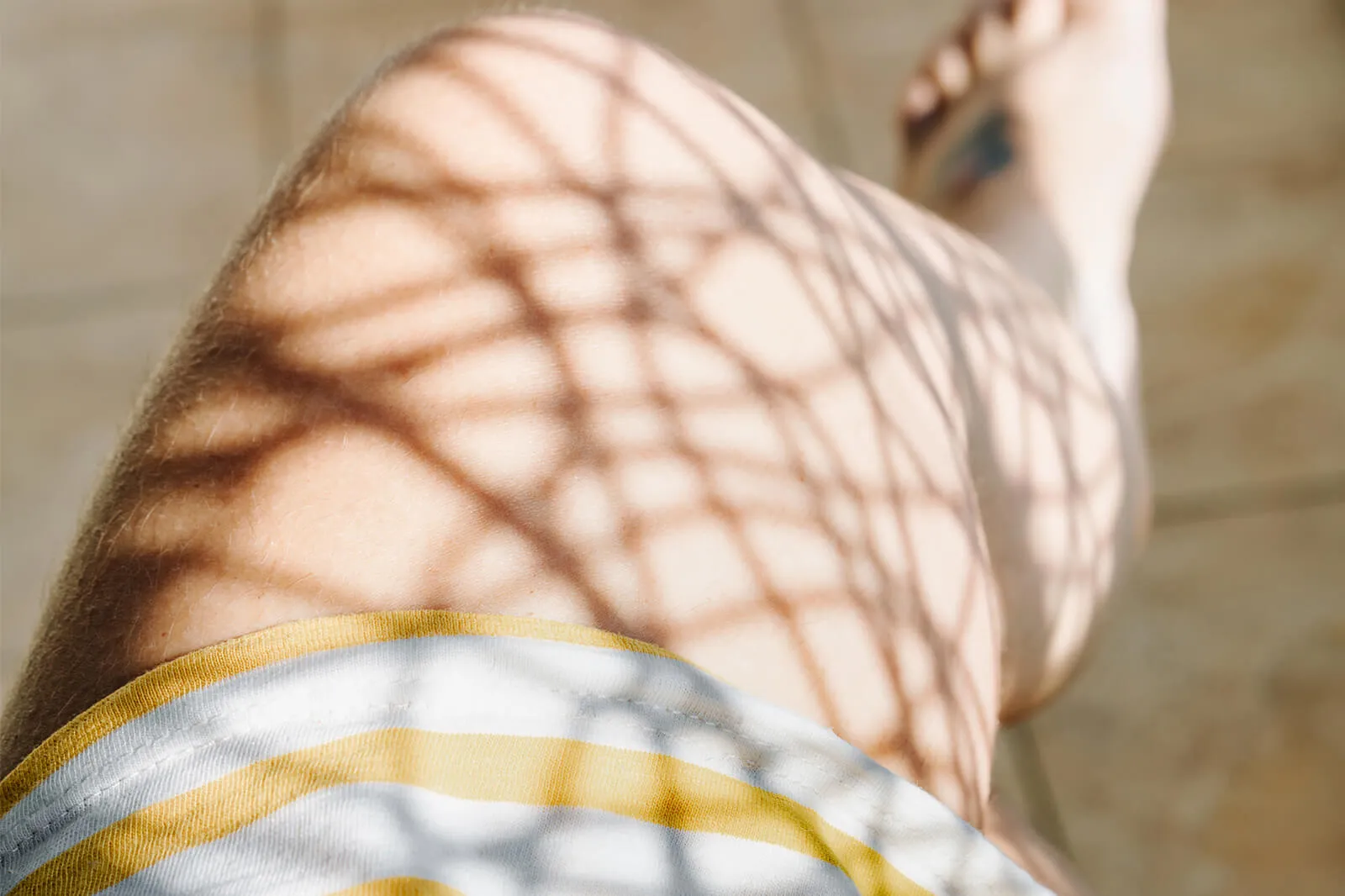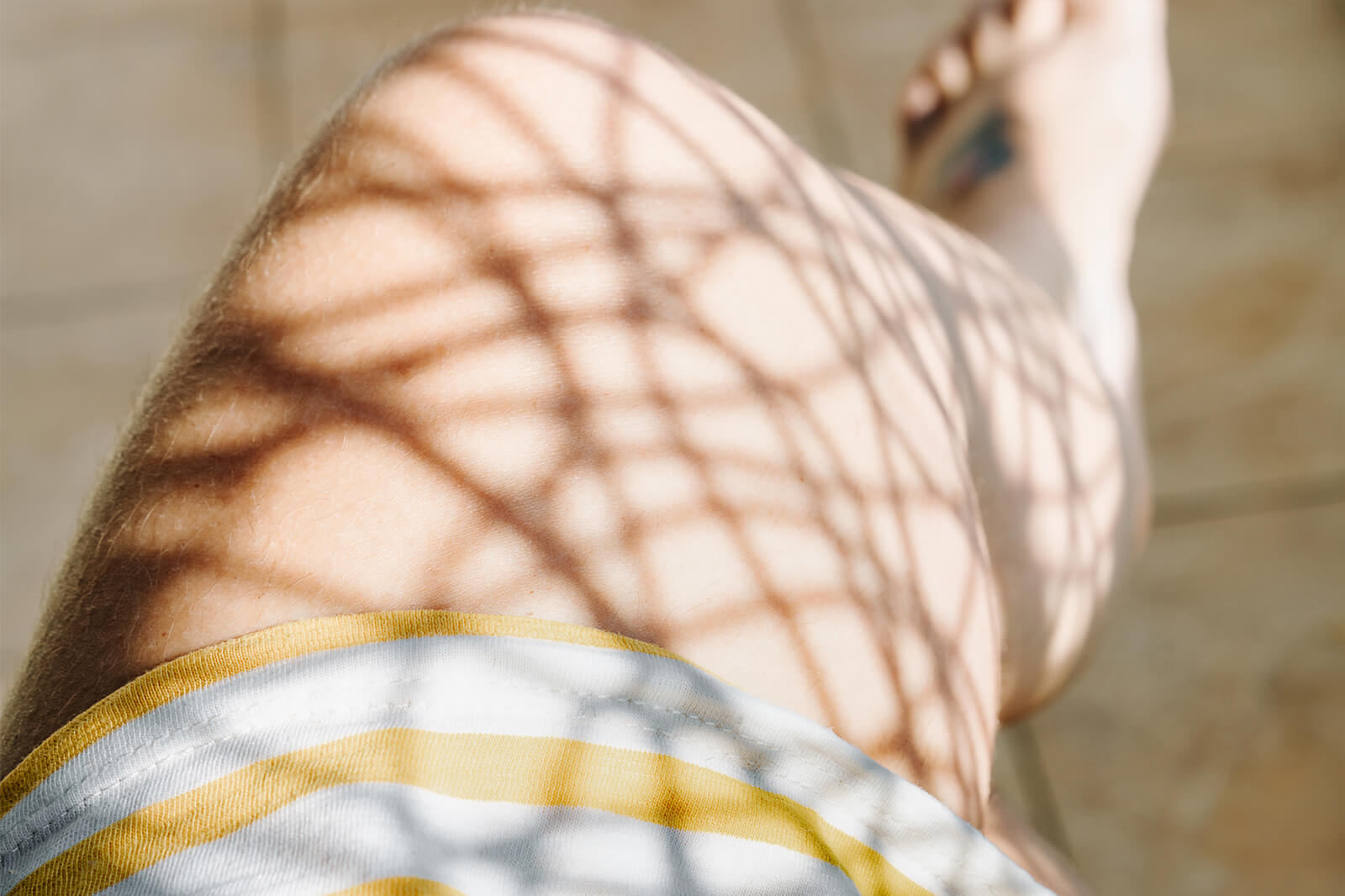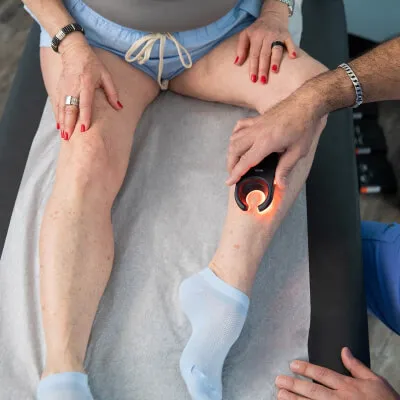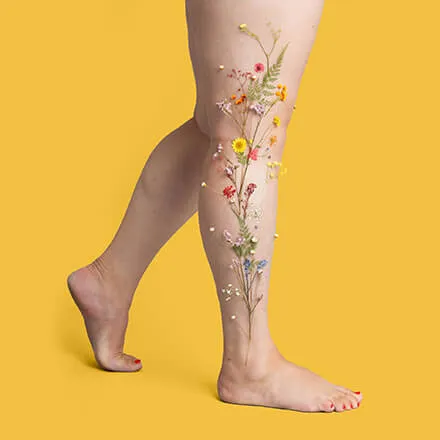Can the Sun Really Give You Spider Veins?
Yes, UV exposure from the sun can cause damage to the skin and blood vessels, increasing your risk of developing spider veins and making existing spider veins more visible. This is because sun damage can weaken vein walls and cause them to dilate, leading to spider veins, especially in areas that are most often exposed to the sun, such as the face and legs.
The Surprising Link Between Summer Sun and Vein Health
During the summer, we are accustomed to faithfully applying sunscreen to our faces and arms to prevent skin cancer, but have you ever thought about what the sun's rays might be doing to your legs and vein health? Read on to learn more about the lesser-known connection between sun exposure and vein health issues, such as spider and varicose veins.
What Are Spider and Varicose Veins, Anyway?
Did you know that millions of Americans, especially women, deal with spider and varicose veins every year? Spider veins are tiny, web-like red or purple lines that can often be seen just beneath the skin's surface. Varicose veins are typically larger, bulging, and twisted veins that appear red, blue, or dark purple. While spider veins often present with no physical symptoms, varicose veins typically cause aching, heaviness, and swelling, and may indicate an underlying condition known as chronic venous insufficiency.
Both conditions can develop when tiny valves inside your veins weaken, allowing blood to pool instead of flowing back to your heart efficiently. Risk factors include genetics (a big one!), age, hormonal changes (like those during pregnancy), and certain lifestyle factors such as prolonged standing or sitting. Although spider veins often present as more of a cosmetic concern, they can also be an early sign of weakened valves and chronic venous insufficiency.
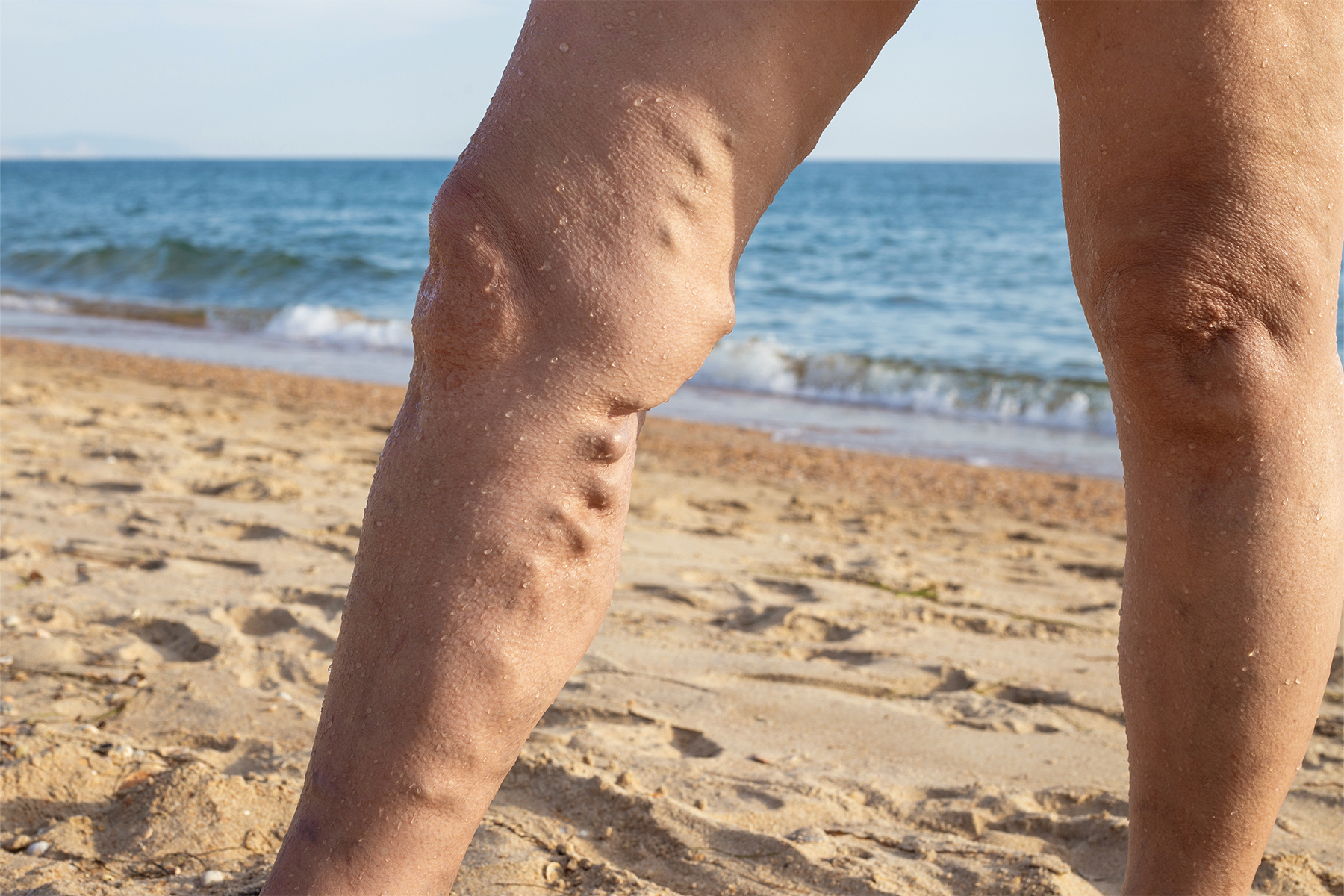
Does the Sun Actually Cause Spider or Varicose Veins?
Yes, prolonged exposure to the sun's rays and hot temperatures can increase your risk of developing vein health issues, like spider and varicose veins. It can also make existing symptoms of vein disease look and feel worse. Here's why.
UV rays can contribute to the breakdown of natural elastin and collagen, which are essential for maintaining the skin's flexibility and elasticity. When this support system starts to weaken, your skin becomes thinner and less able to support the superficial veins underneath. This thinning can make any existing spider veins more visible and capillaries more prone to breaking.
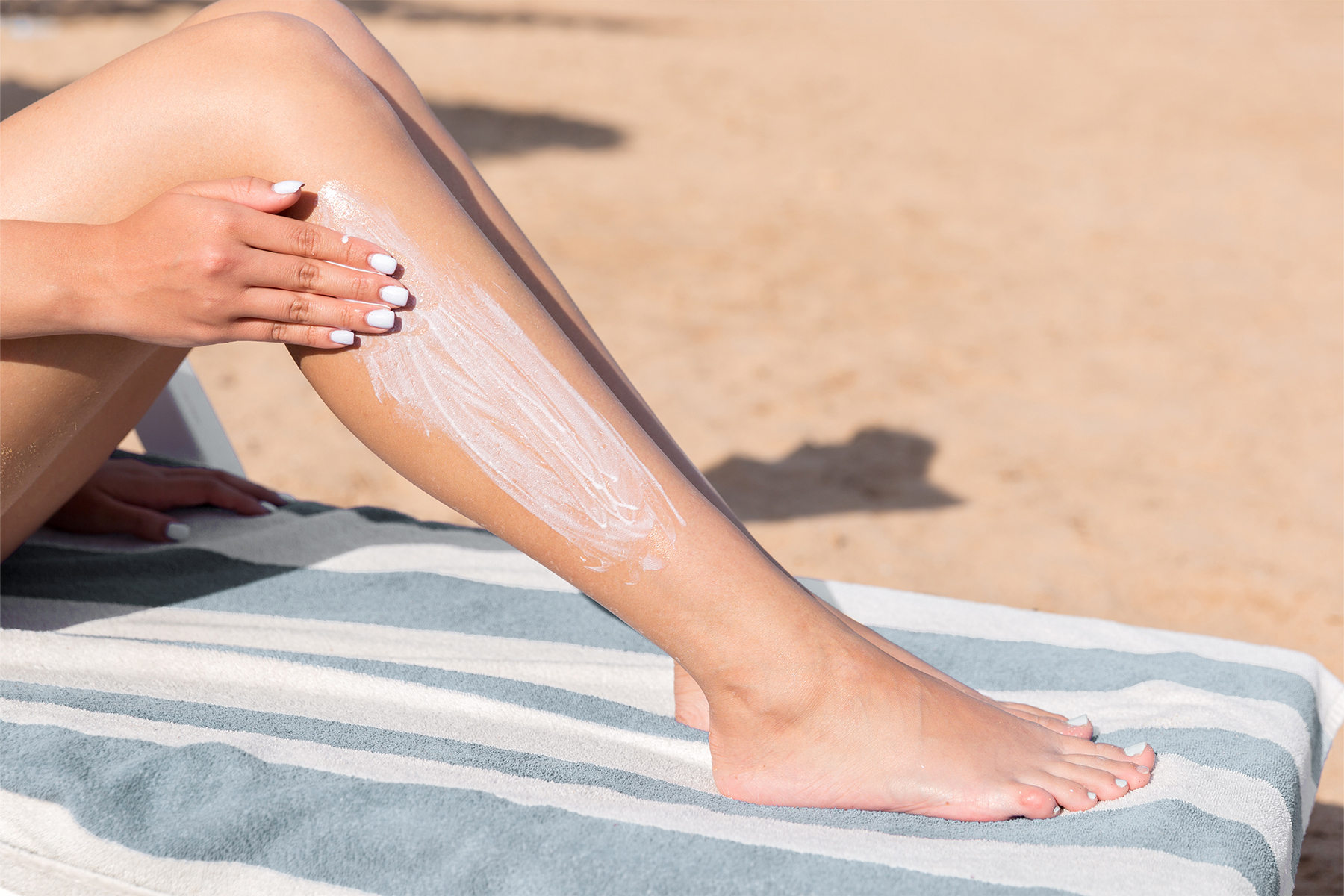
Why Your Legs Deserve Sunscreen, Too
Many of us religiously apply SPF to our faces, backs, and arms, but we may overlook our legs, especially the backs of our knees and thighs. Remember, these areas are just as susceptible to sun damage and are home to a vast network of leg veins, including both superficial venous capillaries and larger veins.
Protecting your legs with sunscreen isn't just about preventing sunburn or skin cancer; it's an important part of preserving your overall skin health and supporting the delicate network of veins below the surface.
Who's Most at Risk?
While everyone should practice sun safety, some individuals are more susceptible to the sun's impact on their veins. These include:
- Fair-skinned people who are more prone to sun damage and the breakdown of collagen.
- People with a family history of venous disease.
- Outdoor workers and athletes, sun worshippers, and anyone who spends extended time in the sun.
If you fall into one of these groups, it's wise to learn more about your risk of vein disease and how to protect yourself in the summer sun.

What You Can Do: 5 Vein-Smart Sun Protection Tips
Protecting your veins from the sun is easy! Just remember these five tips:
- Wear sunscreen daily: Make it a habit to apply broad-spectrum SPF 30+ to all exposed skin, including the front and back of your legs, every day, even on cloudy days. Reapply every two hours, or more frequently if you're swimming or sweating.
- Use UPF clothing: Choose clothing with Ultraviolet Protection Factor (UPF) ratings, such as long cover-ups, rash guards, or lightweight UV-protective pants, especially during lengthy outdoor activities.
- Avoid peak UV hours: The sun's rays are strongest between 10:00 AM and 2:00 PM. If possible, plan your outdoor activities during cooler times of the day.
- Elevate your legs after sun exposure: After a day in the sun, elevating your legs can help minimize swelling and promote healthy circulation.
- Stay hydrated and keep moving! Good circulation is key for vein health in the sun and heat. Drink plenty of water and take regular, low-impact movement breaks to avoid prolonged periods of standing or sitting, which can exacerbate vein issues.
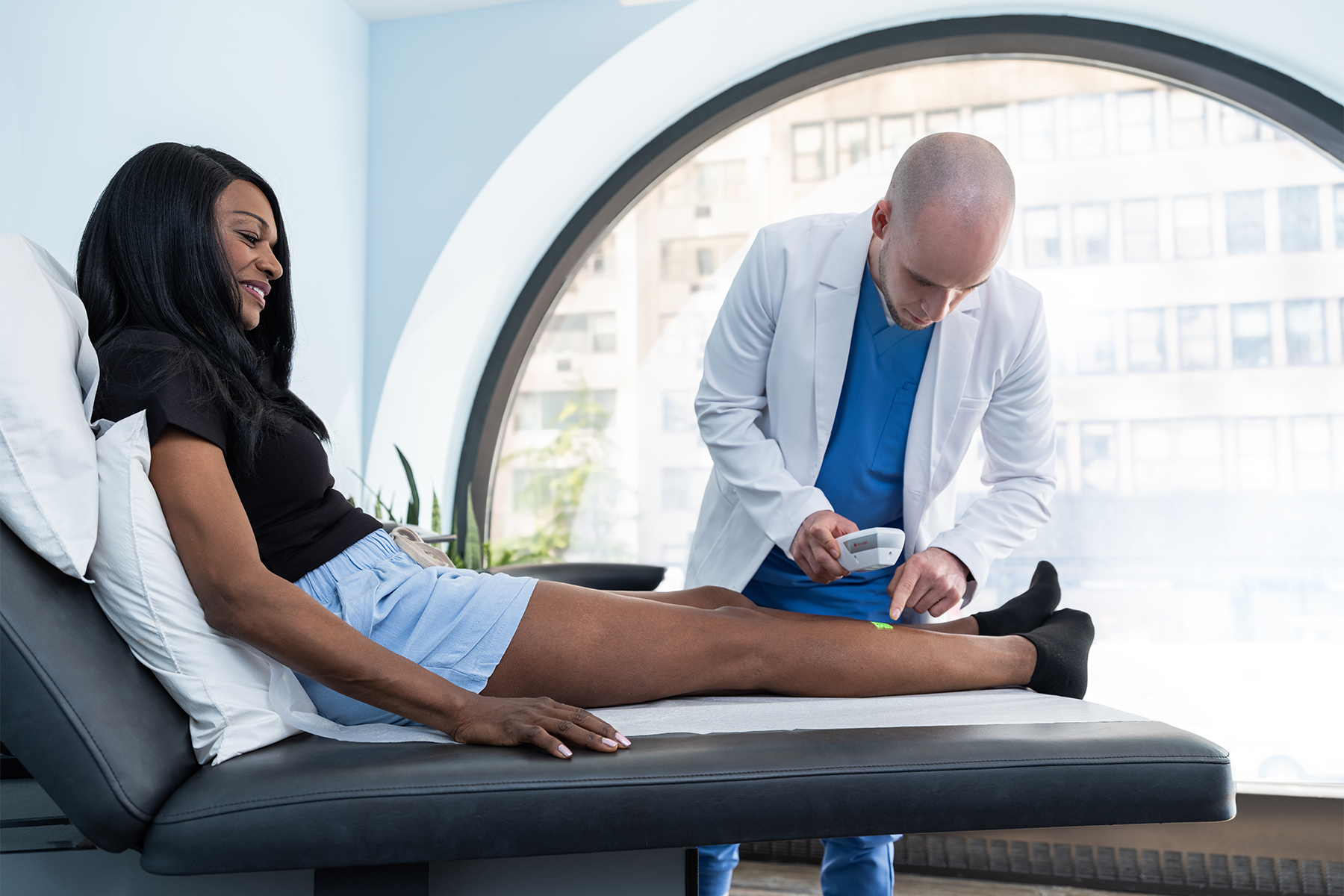
Conclusion: When to See a Vein Specialist
While spider and varicose veins are often considered cosmetic concerns, they can also be an early warning sign of underlying venous insufficiency. If you experience aching, swelling, or notice worsening visible veins--especially if they are accompanied by discomfort--it's always a good idea to consult an experienced vein specialist. Our vein doctors can evaluate your symptoms and recommend the best treatment options for you.
Are you worried about your leg veins? Don't wait until fall to take action. Book a free consultation with a board-certified vein specialist this summer at Metro Vein Centers.
Frequently Asked Questions
Can sun exposure make existing spider veins look worse?
Yes, UV rays can damage the skin's collagen, making the skin thinner and more translucent, which can cause existing spider veins to appear more noticeable.
Can a sunburn directly lead to spider veins?
No, there is not a direct link between one sunburn and the development of spider veins. However, the significant skin damage it causes can contribute to the weakening of skin tissue over time, which can make veins more noticeable.
Is it safe to get vein treatments during the summer months?
Yes. Many minimally invasive vein treatments can be performed safely year-round, including in the summer. During the summer months, your vein specialist may recommend specific post-treatment care, such as avoiding direct sun exposure on treated areas and consistent compression therapy.
If I have a family history of varicose veins, should I be extra careful with sun exposure on my legs?
Yes, if you have a genetic predisposition to venous disease, being extra diligent with sun protection on your legs is a good idea. Protecting your skin from the sun's rays can help reduce one of the risk factors of developing spider or varicose veins.
Besides sunscreen, what else can I do to protect my legs' vein health in the summer?
In addition to sunscreen, staying well-hydrated, wearing UPF clothing, avoiding peak sun hours, elevating your legs regularly, and staying active with movement are all beneficial lifestyle changes that support vein health in warm weather.

Dr. Philip LoPresti
Meet Dr. Philip LoPresti DO, DABVLM, FACS, a board-certified vein specialist and surgeon with over 20 years of experience. Schedule an appointment with him in Queens, NY today.
Meet Dr. Philip LoPresti
Trusted insight from the nationally accredited, board-certified vein doctors at Metro Vein Centers.


